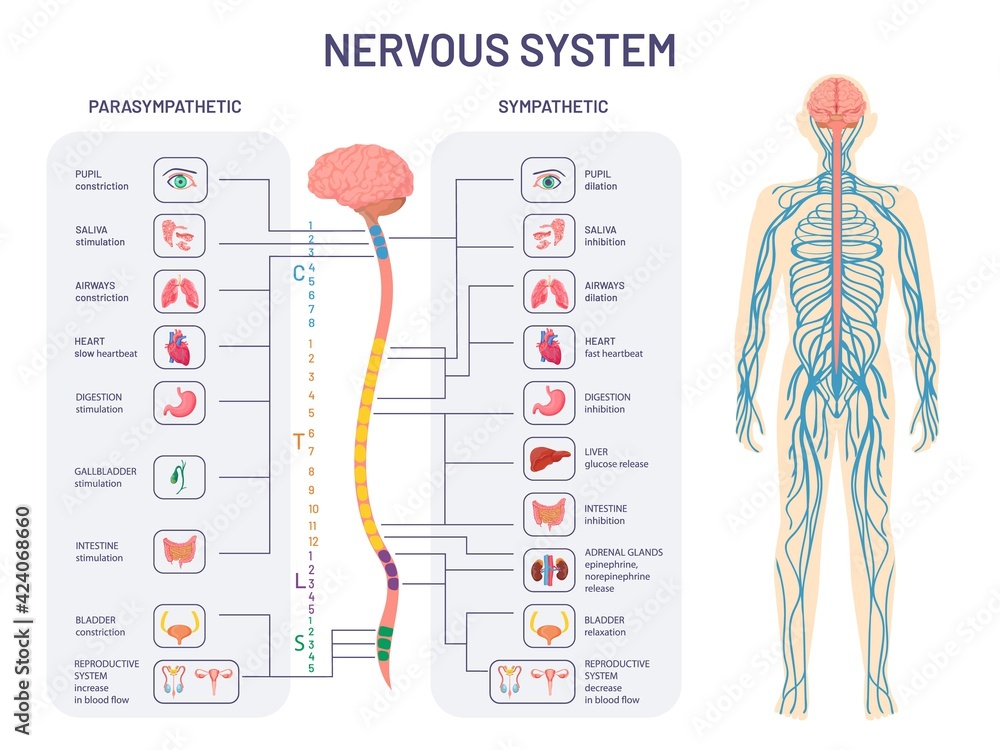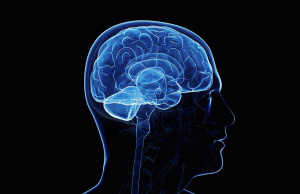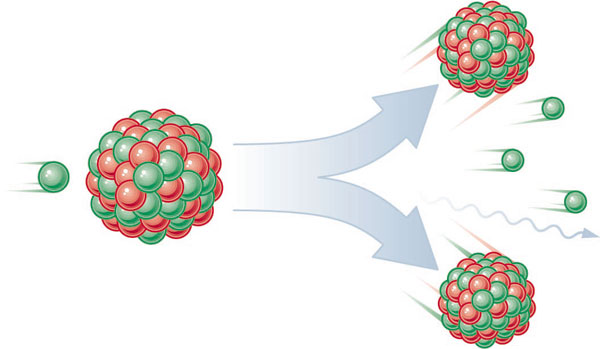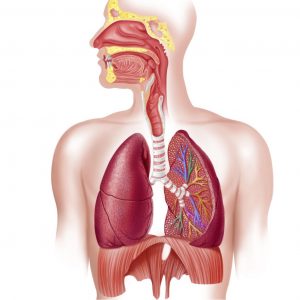Science | May 20, 2020
Nervous System Parts and Their Functions!

The nervous system of our body consists of the brain, spinal cord, sensory organs, and all the nerves that are responsible for connecting these organs with the body. All of these organs help in controlling the body and communication management within the body. The brain and spinal cord are known to be the control center of our body and it is called Central Nervous System (CNS). It is the CNS that helps human beings to evaluate the information and make decisions. Another part of the nervous system is the Peripheral Nervous System (PNS) that includes sense organs and sensory nerves that help in monitoring the conditions inside of outside of the body and send the information to the CNS.
To understand the nervous system in a better way, here is a detailed explanation of the anatomy through which you can know the parts of the nervous systems and their functions.
- Nervous Tissues
The tissues of the nervous system are mainly made up of two types of cells- neurons and neuroglia.
- Neurons: The nerve cells of the body are given the name of neurons that transmit electrochemical signals to communicate within the body. In comparison to the cells of the body, neurons look very different because of the many long cellular processes which are extended from the central cell body of the neurons. It has a tree-like structure which is known as dendrite that extends from the body of the cell for picking up the stimuli. The neurons are divided into 3 classes- afferent neurons, efferent neurons, and interneurons.
- Neuroglia: These are also called glial cells. The neurons in our body have 6 to 60 neuroglia surrounding it that work for protecting, feeding, and insulating the neurons. While neurons are specialized cells that control the body functions, neuroglia is important to maintain a functional nervous system.
Related blog: https://www.vnaya.com/blog/cell-the-fundamental-unit-of-life/
- Brain
Everybody is almost aware of the brain as the control center of the body. It is because of around 100 billion neurons of the brain that mainly controls the functions of the body. The brain is a soft organ that weighs approximately 3 pounds and is present inside a cranial cavity surround by the skulls= to protect it. The brain and spinal cord together are called the Central Nervous System (CNS) of the body and helps in the processing of information. The brain controls the mental functions which include memory, planning, consciousness, and voluntary actions. Along with this, it also helps in controlling the lower body functions like heart rate, maintenance of respiration, digestion, and blood pressure.

- Spinal Cord
The spinal cord is a thin and long mass of neurons bundled together for carrying the information through the vertebral cavity of the spine that begins at the medulla oblongata of the brain to the lumbar region of the spine. The spinal cord separated into a bundled of individual nerves known as cauda equine in the lumbar region that further continues to the sacrum and coccyx. The white matter associated with the spinal cord works as the main conduit of nerve signals from the brain to the body, while the grey matter works on integrating reflexes to stimuli.
- Nerves
Nerves are the main component of the Peripheral Nervous System (PNS) which are bundles of the axon and works as the information highways for carrying signals between the brain and spinal cord and the body. The axons of the nerves form groups of axons which are called fascicles and are wrapped in a connected tissue known as perineurium. These fascicles are wrapped together is another connective tissue known as epineurium that forms a whole nerve. The nerves of the body are divided into different categories:
- Afferent, efferent, and mixed nerves: These nerves carry information only in one direction. The afferent nerves are the ones that carry information from sensory receptors to the central nervous system. Efferent nerves carry signals from CNS to muscles and glands, while the mixed nerves consist of both afferent and efferent axons.
- Cranial nerves: There are 12 pairs of cranial nerves that extend from the inferior side of the brain. These nerves provide a connection to the brain for the muscles of the head, sense organs, heart, neck, shoulders, and GI tract.
- Spinal nerves: 31 pairs of spinal nerves extend from the left and right sides of the spinal cord. These nerves carry both motor and sensory signals between the spinal cord and different parts of the body. In these 31 pairs, there are 12 pairs of thoracic nerves, 8 pairs of cervical nerves, 5 pairs of lumbar nerves, 5 pairs of sacral nerves, and 1 pair of coccygeal nerves.

- Meninges
The meninges are known to act as the protective coverings of the CNS which consists of three layers- dura mater, arachnoid mater, and pia mater.
- The dura mater is the thickest and toughest of the meninges and helps in protecting the CNS from any external damage.
- The arachnoid mater is more delicate and thinner than the dura mater and has many thin fibers which connect it to the pia matter beneath it.
- The pia mater is a delicate layer that is present on the outside of the brand and spinal cord and contains many blood vessels.
- Cerebrospinal Fluid
The space present around the CNS organs id filled with cerebrospinal fluid (CSF), a clear fluid that is formed of blood plasma with structures known as choroid plexuses. CSF helps in absorbing the shocks that occur between the brain and skull and the vertebrae. Along with this, the brain and spinal cord are known to float within CSF that supports minimizing their weight because of buoyancy.
- Sense Organs
The sense organs of the body are the components of the nervous system. The special senses incorporate vision, smell, hearing, taste, and touch which are detected by organs like eyes, nose, ears, tongue, and skin. The sensory receptors are connected to afferent neurons that help in carrying the sensory information to CNS where it is processed.















Post a Comment: